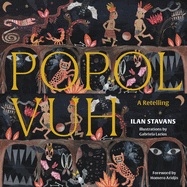
| Publisher: | Restless Books | |
| Genre: | Classics, Hispanic & Latino, Fairy Tales, Folk Tales, Legends & Mythology, Adaptations & Pastiche, Fiction | |
| ISBN: | 9781632062406 | |
| Pub Date: | November 2020 | |
| Price: | $22 |
| Fiction |
by Ilan Stavans, illust. by Gabriela Larios
The Popol Vuh was written to preserve Mayan culture during colonization. To quote the K'iche' authors, "We are currently under a new law of God and Christianity, dismayed that our faces are hidden and the Popol Vuh... is no longer heard." This exquisitely illustrated prose retelling, by award-winning scholar of Latin American literature Ilan Stavans, features an introduction by author and environmental activist Homero Aridjis and pictures by folk artist Gabriela Larios. The enchanting illustrations stimulate the imagination, with the vibrant hues and rhythmic composition delightfully complementing these exciting tales of gods and heroes.
Popol Vuh: A Retelling is a beautiful and accessible text that will inspire, inform and ensure that the voices of the Indigenous people of the Americas are still heard today. --Grace Rajendran, freelance reviewer and literary events producer

| Publisher: | Clarkson Potter | |
| Genre: | Literary Criticism, Reference, Literary Collections, Books & Reading, Essays | |
| ISBN: | 9780525574972 | |
| Pub Date: | October 2020 | |
| Price: | $25 |
| Essays & Criticism |
by Michiko Kakutani, illust. by Dana Tanamachi
For nearly four decades, Michiko Kakutani (The Death of Truth) dispensed incisive, erudite, sometimes wry literary criticism for the New York Times. In Ex Libris, Kakutani offers brief essays on roughly 100 books she has found worthwhile and enjoyable, accompanied by Dana Tanamachi's striking jewel-toned illustrations.
Writing "less as a critic than as an enthusiast," Kakutani shares her love of books from all across her shelves: from A Wrinkle in Time to The Sixth Extinction, Dr. Seuss to Colson Whitehead's The Underground Railroad. There are novels, memoirs and highly varied nonfiction: books on vocation, foreign policy, even a few Muhammad Ali biographies. Each book gets Kakutani's signature sharp-eyed treatment, but there's joy here, too. This collection celebrates what it also contains: the deep pleasure of reading books that entertain, educate and edify. --Katie Noah Gibson, blogger at Cakes, Tea and Dreams
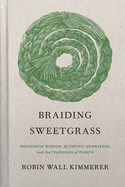
| Publisher: | Milkweed Editions | |
| Genre: | Nature, American - Native American Studies, Science, Anthropology, Ecology, Plants, Social Science, Life Sciences, Philosophy & Social Aspects, Botany, General, Cultural & Social, Essays, Ethnic Studies | |
| ISBN: | 9781571311771 | |
| Pub Date: | October 2020 | |
| Price: | $35 |
| Nature & Environment |
by Robin Wall Kimmerer
Originally published in 2013, Braiding Sweetgrass: Indigenous Wisdom, Scientific Knowledge, and the Teachings of Plants by Robin Wall Kimmerer (Gathering Moss), a member of the Citizen Potawatomi Nation, has become a seminal work for nature lovers, hard science professionals and social scientists, uniting readers around the world who regard this text as a sacred object. This reissued gift edition features a linen cloth hardcover, a bookmark ribbon and deckle-edged pages, and also showcases five woodcut illustrations by Nate Christopherson and an updated introduction by the author.
Wise and wonderous, scientific and spiritual, Braiding Sweetgrass combines poetry and science with storytelling: Indigenous creation stories from the Anishinaabe peoples and Citizen Potawatomi Nation, personal stories from Kimmerer's life, and the lessons plants, animals and the natural world have to teach us. "The land is the real teacher. All we need as students is mindfulness." --BrocheAroe Fabian, owner, River Dog Book Co.

| Publisher: | Princeton Architectural Press | |
| Genre: | Design, Textile & Costume, Quilts & Quilting, Fiber Arts & Textiles, Crafts & Hobbies | |
| ISBN: | 9781616898373 | |
| Pub Date: | November 2020 | |
| Price: | $40 |
| House & Home |
by Abby Gilchrist, Amelia Poole
Abby Gilchrist, proprietor of fabric store Fiddlehead Artisan Supply in Belfast, Maine, teams with textile designer Amelia Poole in this showcase of quilting's "modern fabric." Based on interviews with 25 diverse, inspiring fabric designers, this stylish essay collection features an opulent assortment of photographs that bring readers into studios to view the process and products firsthand. Ink sketches translate delicate blossoms into patterns at Naomi Ito Textile in Osaka. Mustard-yellow butterflies emerge from the screen-printing process at Erin Flett's Maine studio. And ancestral pottery patterns come to life in textile form at Indigo Arrows in Manitoba. Brief essays detail the designers' philosophies and creative processes.
Set a budget before opening the book, because quilting and fabric enthusiasts will discover bolts of inspiration they'll be eager to transform in their next sewing adventure. --Jaclyn Fulwood, blogger at Infinite Reads

| Publisher: | Houghton Mifflin Harcourt | |
| Genre: | Container, Gardening, General, Flowers, Garden Design | |
| ISBN: | 9780358161516 | |
| Pub Date: | March 2020 | |
| Price: | $18.99 |
| House & Home |
by Peter Loewer
As hard-to-kill houseplants skyrocket in popularity among quarantine-constricted amateur gardeners, true green thumbs might be searching for a headier challenge. Container and Fragrant Gardens is a delightful guidebook detailing how to spruce up small spaces with vibrant and sweet-smelling plants. Peter Loewer, author of more than 30 garden books, exudes joy for greenery as he gives plant-by-plant recommendations, points out the best pots and soils to use, and shares the pros and cons of each species. He focuses mostly on outdoor plants rather than the sort of houseplants that might be seen on Instagram or TikTok. He does, however, include notes on succulents, ferns and flowering houseplants for those not yet ready to venture outdoors. Neatly packaged, with vivid photography and easy-to-read text, including a helpful index and a map of USDA hardiness zones, Container and Fragrant Gardens is an excellent starter guide for growing a personal paradise. --Lauren Puckett, freelance writer

| Publisher: | Workman | |
| Genre: | Self-Help, Pets, Form, Dogs, Affirmations, General, Pictorial, Humor | |
| ISBN: | 9781523508105 | |
| Pub Date: | September 2020 | |
| Price: | $12.95 |
| Pets |
by Isabel Serna
Designer Isabel Serna's (Crazy Plant Lady) author photo in Dog Mom: A Love Story confirms two of her credentials, according to her Dog Mom Bingo card: she dresses her dog (in a red bow tie) and sat for a mom-and-dog portrait (with Charlie, her French bulldog). Like Serna, any smitten dog mom will freely admit that she, too, can check off the squares. (Watch your dog sleep? Purchase puppuccinos? Have the vet on speed dial?) Full-color drawings suggest a multitude of breeds, inviting recognition from moms of purebreds to mutts. Canine trivia (Sirius, the dog star, is the brightest in the sky!) and a page of gold-embossed stickers add to the appeal of this perfect gift for any woman devoted to her pup. --Cheryl McKeon, bookseller, Book House of Stuyvesant Plaza, Albany, N.Y.
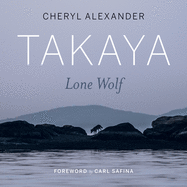
| Publisher: | Rocky Mountain Books | |
| Genre: | Nature, Animals, Wolves | |
| ISBN: | 9781771603737 | |
| Pub Date: | October 2020 | |
| Price: | $30 |
| Art & Photography |
by Cheryl Alexander
Wildlife photographer Cheryl Alexander tells the story of a wolf who found his way to a group of tiny uninhabited islands near Vancouver, B.C., and made them home. Living without a pack in an environment unlike a typical wolf habitat, Takaya learns to make use of the resources available, avoid visitors and thrive. Inevitably, the story is also about people: their process of learning about him, his interactions and conflicts with humans, and his significance to them. As a result, Alexander became an advocate for this individual from a still much-feared species. Illustrated with stunning photos of Takaya, other wildlife and their glorious surroundings, this powerful volume is a perfect gift for nature lovers, particularly those who approach the wild with a touch of the spiritual. --Linda Lombardi, writer and editor
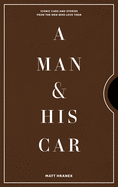
| Publisher: | Artisan | |
| Genre: | Design, Biography & Autobiography, Antiques & Collectibles, Transportation, Fashion & Accessories, Personal Memoirs, Automotive | |
| ISBN: | 9781579658922 | |
| Pub Date: | October 2020 | |
| Price: | $40 |
| Art & Photography |
by Matt Hranek
Matt Hranek (A Man and His Watch) celebrates the distinctive world of car culture in this fascinating collection of classic automobiles and their stories. His gallery-worthy photos are visual testimony to car design as an art form and are paired with their owner's memories and the joys of being a gearhead. The variety of autos featured include Snoop Dogg's 1965 Cadillac Coupe de Ville, Kevin Costner's 1968 Shelby Mustang GT350 Convertible, Jay Leno's 1955 Buick Roadmaster, Magnus Walker's 1971 Porsche 911T and many more. Hranek tells the accompanying stories with affection, experience and an underlying passion. This illustrated tale of the love affair between owners and automobiles is certain to take readers on an armchair roadtrip they'll happily repeat many times. --Lois Faye Dyer, writer and reviewer
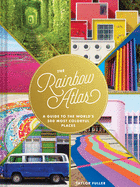
| Publisher: | Chronicle Books | |
| Genre: | Photography, Travel, Subjects & Themes - Regional), Regional (see also Travel - Pictorials), Art, Pictorials (see also Photography, Subjects & Themes, Color Theory | |
| ISBN: | 9781452182827 | |
| Pub Date: | May 2020 | |
| Price: | $30 |
| Art & Photography |
by Taylor Fuller
While perusing The Rainbow Atlas: A Guide to the World's 500 Most Colorful Places by Taylor Fuller (with contributions from other travel bloggers), it's impossible to determine which locations are most breathtaking. Is it the rainbow brick road in Reykjavik, Iceland? The streets strung with ethereal silk lanterns in Da Nang, Vietnam? Or the full-size LEGO house in Billund, Denmark, with 25 million toy LEGO bricks inside to encourage playtime? Fuller and the others sought out destinations across the globe that are painted by nature's magnificent palettes, places where any photos taken would require no filters to improve. With chapters arranged by longitude, from Alaska to New Zealand, this collection is a feast for the eyes, creating instant wanderlust and bucket lists of vacation ideas. --Elyse Dinh-McCrillis, blogger at Pop Culture Nerd

| Publisher: | Genesis Publications | |
| Genre: | Biography & Autobiography, Rock, Music, Genres & Styles, Individual Composer & Musician | |
| ISBN: | 9781905662616 | |
| Pub Date: | October 2020 | |
| Price: | $60 |
| Art & Photography |
by Jimmy Page
A feast for guitar lovers, this luxurious scrapbook surveys wonders from the archives of Jimmy Page, the Led Zeppelin guitar hero. It's bursting with photos and personal ephemera, and not just of the legend's storied Les Pauls, Danelectros and double-neck cherry Gibsons. Dig the star-to-be with a rockabilly pompadour; session logs from his days as an axe-man for hire for the likes of Burt Bacharach, Donovan and Van Morrison and Them; and his 60-year-old sheet music of Chuck Berry songs. This treasury boasts lively new memories penned by Page (the first time he saw an audience wave lighters was when Zep played "Stairway to Heaven" in Montreal in the early '70s) and a welcome commitment to, in Page's words, photographing guitars with "shots and angles that nobody had come up with before." --Alan Scherstuhl, freelance writer and editor

| Publisher: | Schiffer Publishing | |
| Genre: | Photography, Travel, United States, General, Photoessays & Documentaries | |
| ISBN: | 9780764359286 | |
| Pub Date: | May 2020 | |
| Price: | $34.99 |
| Art & Photography |
by Rob Hammer
Barbershops of America is a photographic tribute to a profession, an aesthetic and a community institution. Photographer Rob Hammer documents both "the old timers... like dinosaurs about to go extinct" and "the next generation," in two distinct sections covering more than a thousand shops all over the United States. Images are only infrequently interrupted by quotations from barbers and their customers, so readers of this coffee-table book will revel most in the visual: elderly barbers and young, tattooed ones; beat-up barber chairs and decades of detritus; colorful signage, diverse clientele and what Hammer recognizes as the soul of these storied spaces. This collection of glossy documentary art is for lovers of culture, local color and traditions passed down across generations. --Julia Kastner, librarian and blogger at pagesofjulia

| Publisher: | Thames & Hudson | |
| Genre: | Art, Individual Artists, General, Asian, Japanese | |
| ISBN: | 9780500294611 | |
| Pub Date: | October 2020 | |
| Price: | $34.95 |
| Art & Photography |
by Katsushika Hokusai, Kyoko Wada, editor, trans. by Polly Barton
A continuous "runaway bestseller" for over two centuries, Hokusai Manga re-emerges in the U.S. in an irresistible boxed gift set. Japanese artist Katsushika Hokusai (1760-1849), renowned for his iconic The Great Wave Off Kanagawa print and the woodblock series Thirty-Six Views of Mount Fuji, created Hokusai Manga as a drawing manual for his apprentices. With its initial 1814 publication, its popularity immediately inspired a clamoring public to demand more, spawning 15 volumes over 64 years. Beyond the name, this is not contemporary manga but rather a captivating artistic precursor; here, manga "is a redaction of the phrase manzen to egaita ga ('whimsically drawn pictures')." Every page invites repeated viewings through these three fits-perfectly-in-the-hand volumes that celebrate and commemorate everyday life, natural wonders and the fanciful imagination. --Terry Hong, Smithsonian BookDragon

| Publisher: | Feminist Press | |
| Genre: | Art, Social Classes & Economic Disparity, Art & Politics, Revolutionary, Social History, History, Social Science | |
| ISBN: | 9781936932870 | |
| Pub Date: | August 2020 | |
| Price: | $28.95 |
| Art & Photography |
by
In 1998, activist Josh MacPhee pasted the first Celebrate People's History posters on boarded-up storefronts on Chicago's West Side. Since then, the CPH project has become a multi-voiced conversation about history, social justice and public space in visual form. The second edition of Celebrate People's History: The Poster Book of Resistance and Revolution shares more than 200 posters celebrating and illustrating successful moments in the history of social justice, from the secession of Roman plebes in the fifth century BCE to protests against the Confederate Soldiers Monument in Durham, N.C., in 2017. Visually stunning, the posters are as diverse as the political traditions and historical moments they illustrate. Celebrate People's History is a delight for the eyes, the mind and the heart. --Pamela Toler, blogging at History in the Margins
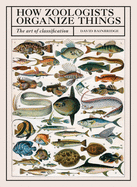
| Publisher: | Frances Lincoln | |
| Genre: | Life Sciences, Nature, Animals, Taxonomy, Science, General, Zoology - General | |
| ISBN: | 9780711252264 | |
| Pub Date: | July 2020 | |
| Price: | $26 |
| Art & Photography |
by David Bainbridge
From ancient Egyptian murals to Aristotle's formulation of an organization system, humans have been "obsessed with the visual similarities and differences between the creatures that inhabit the Earth alongside us." In a beautifully bound volume teeming with illustrative references, David Bainbridge (Teenagers: A Natural History) proceeds step-by-step through the evolution of species classification. Categorization was more complex than one might realize, and originally influenced (i.e., "forcibly reconciled with the Christian world view") by prevailing religious beliefs.
How Zoologists Organize Things is a detailed yet reader-friendly text and an astounding trip through nature's artistic history. Ancient religious paintings, Audubon works, diagrams and zoological plates all show the impact of the animal world on man's artistic drive. Fascinating to thumb through, take random deep dives in or read cover to cover. --Lauren O'Brien of Malcolm Avenue Review
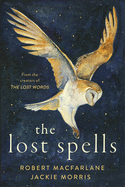
| Publisher: | Anansi International | |
| Genre: | Nature, Art, Environmental Conservation & Protection, English, Irish, Scottish, Welsh, Linguistics, General, Poetry, Subjects & Themes, Etymology, Language Arts & Disciplines, European, Plants & Animals | |
| ISBN: | 9781487007799 | |
| Pub Date: | October 2020 | |
| Price: | $26 |
| Art & Photography |
by Robert MacFarlane, illust. by Jackie Morris
Nature writer Robert MacFarlane and illustrator Jackie Morris created The Lost Words in 2017, with the intent of reintroducing a natural vocabulary to a young generation for whom they felt it had been gradually lost. Through deeply humane poems paired with warm illustrations, MacFarlane and Morris invited readers into the space where the enchanting natural world meets the expansive imagination. MacFarlane and Morris describe this follow-up book, The Lost Spells, as "the little sister" of The Lost Words. Crafted with the same tenderness as its sibling, The Lost Spells invites readers into a meditation on their interdependence with nature and their capacity to appreciate all that dwells outside of the boundaries of their daily lives--like the goldfinch, the feathered thorn moth, the white willow and the little egret. --Emma Levy, writer